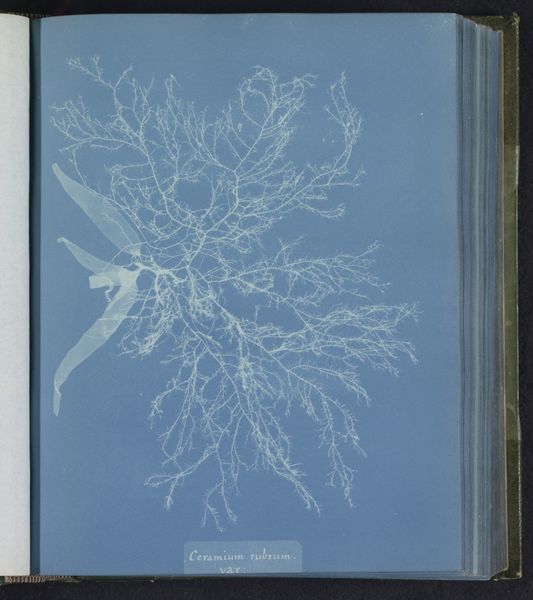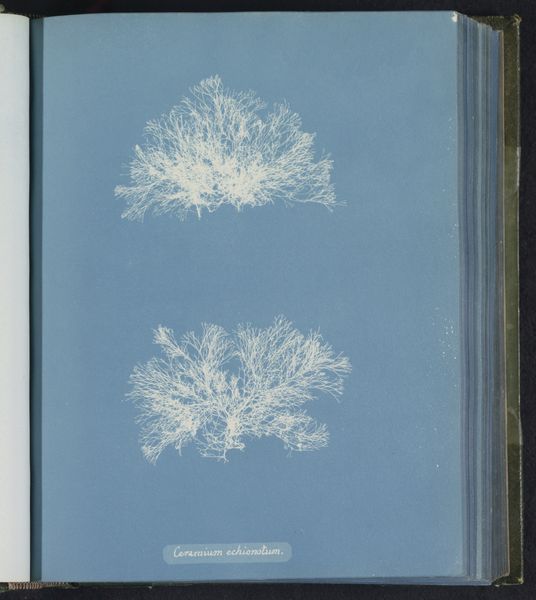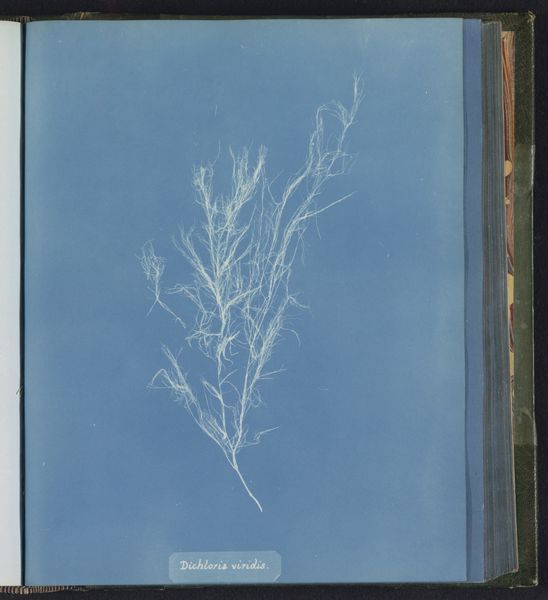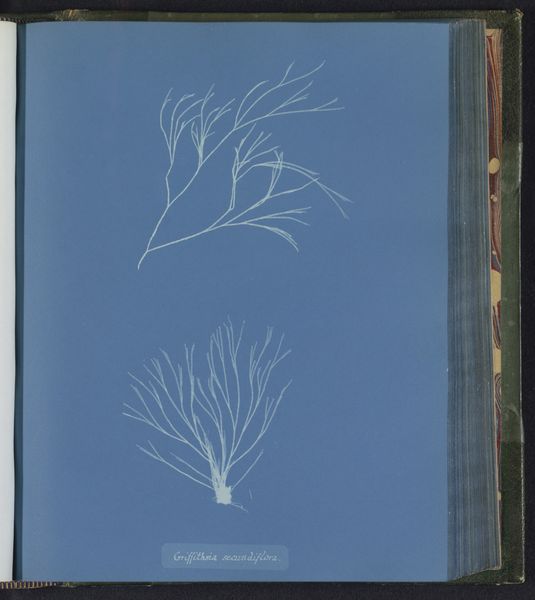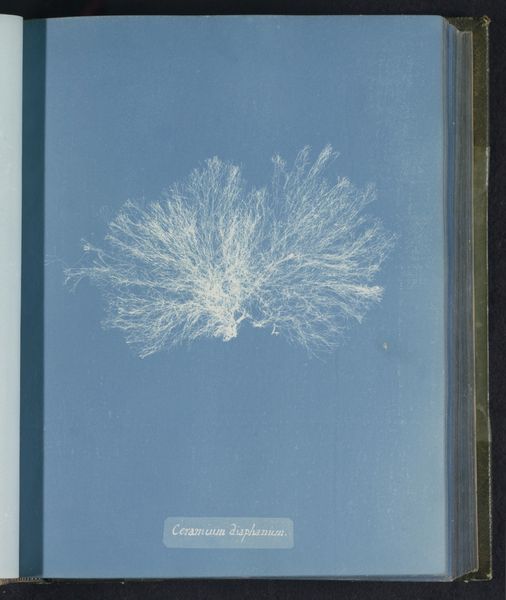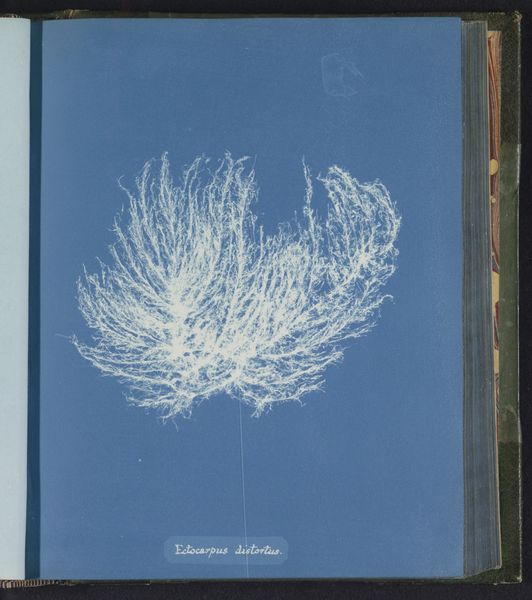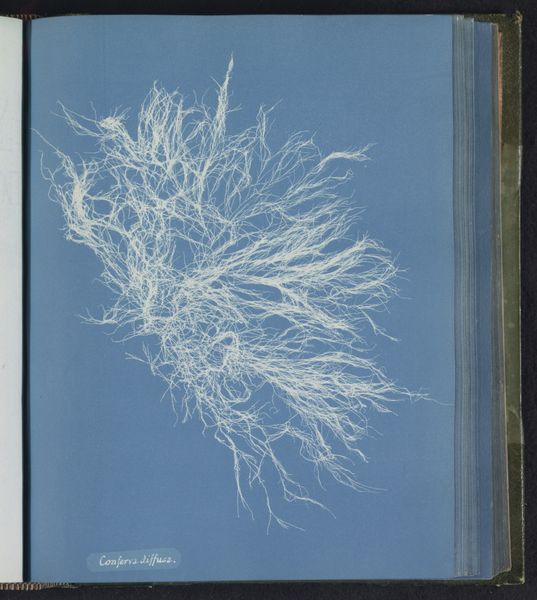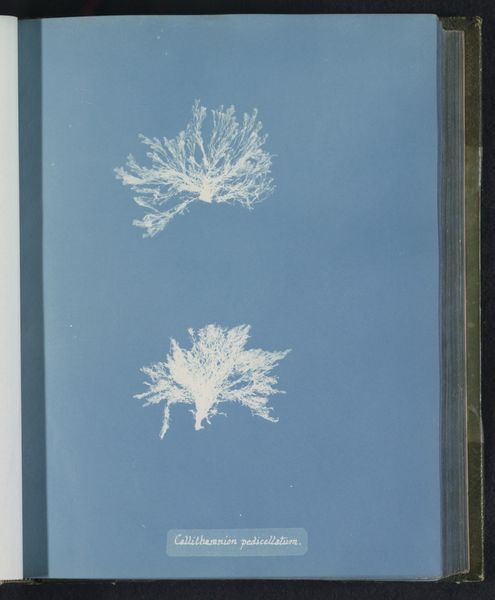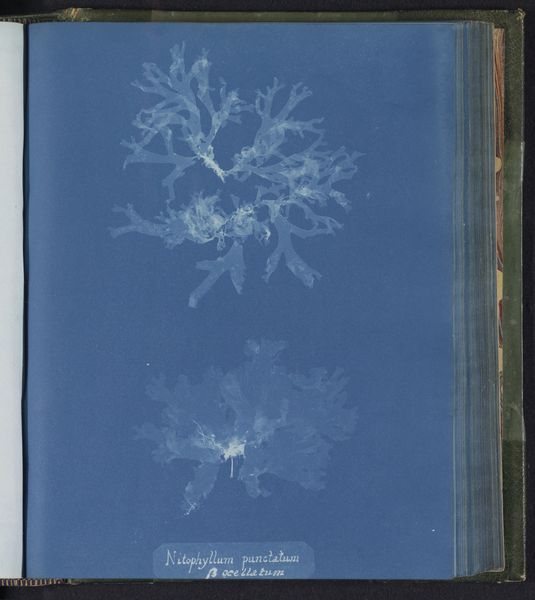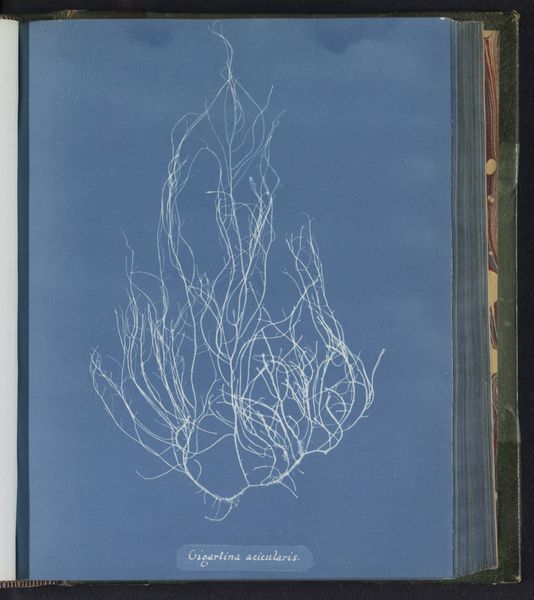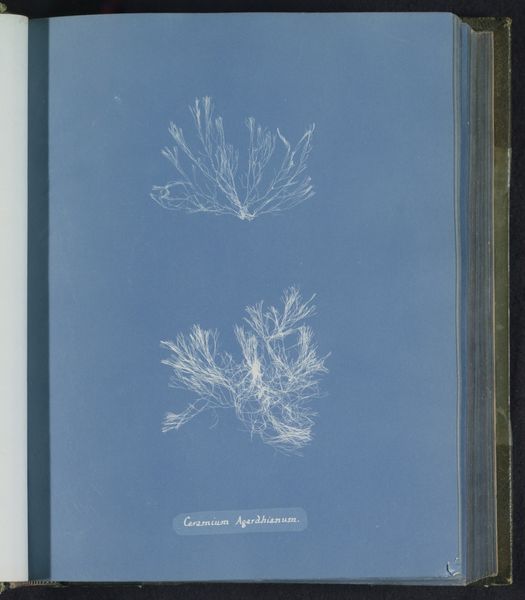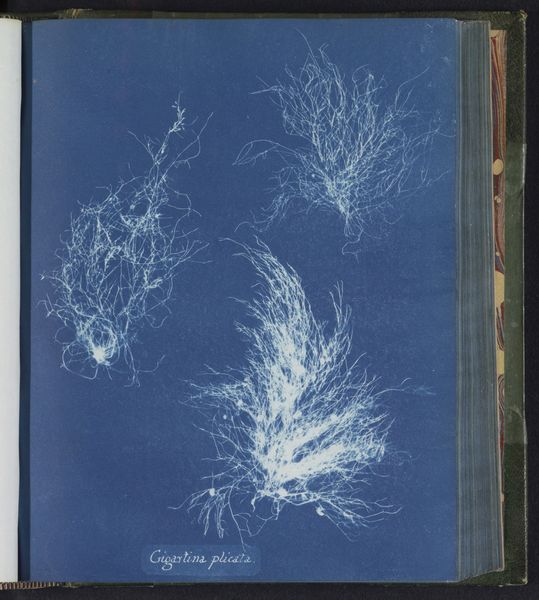
print, cyanotype, photography
# print
#
cyanotype
#
photography
#
botanical art
#
realism
Dimensions: height 250 mm, width 200 mm
Copyright: Rijks Museum: Open Domain
Curator: Looking at Anna Atkins' cyanotype, "Gigartina acicularis / a in fine fruit," created between 1843 and 1853, I'm struck by the stark elegance of the composition. What’s your immediate take? Editor: A ghostly record. The crisp white against that intense blue is arresting. There’s a delicacy to it that almost belies the industrial processes involved in early photography. Curator: Exactly. The cyanotype process itself is fascinating. As one of the earliest forms of photography, it required coating paper with light-sensitive chemicals, then placing objects—in this case, seaweed specimens—directly onto the paper before exposing it to sunlight. This speaks volumes about material engagement. How scientific methodologies intersected with artistic exploration in the 19th century. Think of it as women like Atkins using newly available tools for observation, and claiming authority over classifying their subjects, as many other woman scientists like Maria Merian. Editor: It’s an early instance of cameraless photography. You consider the agency inherent in the method. There is something poignant about Atkins carefully arranging each strand, participating actively in creating a historical document about her process of scientific and personal research. And beyond the process itself, the way seaweed becomes visible through chemistry offers new lenses in a society that actively diminished contributions from female intellects. Curator: Agreed, and seeing the Gigartina, preserved this way it feels she re-imagines the scientific publishing. This simple print really encourages a deeper consideration about power and science. Editor: It's about challenging our presumptions and valuing a female scientist who embraced experimentation when photography was still raw potential. Curator: Indeed, she pioneered an important relationship between gender and art, science and technology, that resonates even now. Editor: For me, it reaffirms the importance of process and the power in subverting established hierarchies. Curator: A powerful blend of scientific recording and female assertion.
Comments
No comments
Be the first to comment and join the conversation on the ultimate creative platform.
